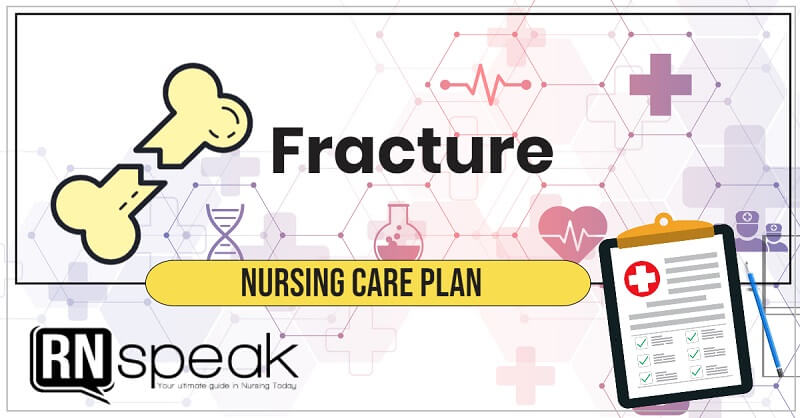Fracture is the discontinuity or breaks in the bone which is usually accompanied by trauma to the surrounding tissue. It commonly varies in size, severity, and treatment needed. They can range from slight missed crack in the bone to pelvic injury.
Injuries to the surrounding tissues of the fractured site, involving the nerves, skin, vessels, muscles, or worse an organ can even demand a more complicated treatment.
A fracture may be caused by fall, vehicular accidents, or certain underlying disorders which can weaken portions of the skeleton to break- these disorders may include certain infections, benign bone tumors, cancer, and osteoporosis.
The common manifestations of fracture are pain, swelling, redness, and the limb may not function properly or a shortened limb may also be observed.
There are five common types of fracture: (1) Complete – fracture involves the entire bone with cross-sectional injury to bone-breaking it into bone fragments; (2) Incomplete – it only involves a portion of the bone by which one side is broken while the other is not or just had bent; (3) Closed – a fracture which does not extend through the skin; (4) Open – bone fragments extends through the muscle of the skin; and (5) Pathological – a fracture which happens in a diseased bone or due to osteoporosis or cancer.
The Merck Manual of Medical Information 2nd Home Edition. (2003). Merck & Co., Inc.
Nursing Diagnosis: High Risk for Trauma (Additional)
Possible Etiologies: (Related to)
Individual
- Loss of skeletal integrity (fracture)
- Movement of bone fragments
- Balancing difficulties
- Weakness
- Lack of safety education/ precautions
- History of previous trauma
Environment
- Slippery floors
- Bathtub without hand grip
- Unsteady ladder or chairs
- Unsteady Unlit room or absence of stair rails
- High bed
Defining Characteristics: (Evidenced by)
*NOT APPLICABLE since the problem has not occurred yet and nursing intervention focus on prevention.
Objectives:
Short term goal:
Client will be able to perform correct body mechanics, reducing his risk for further injury.
Long term goal:
Client will be able to understand and accept skeletal integrity and will be able to recognize the need for assistance; identify and correct possible factors in the environment and demonstrate lifestyle changes in promoting bone integrity and preventing self from further injury.
Outcome Criteria:
Client will be able learn and perform correct body mechanics like using crutches while walking and sitting after 8 hours of nursing care.
Client will be able to identify essential key points in assisting the body to move, correct potential hazardous environmental factors, and accept disease condition which needs assistance from others or by which client will be able to develop to learn how to do usual daily activities without assistance from others appropriately.
Nursing Interventions:
|
Nursing Actions |
Rationale |
| Determine factors related to the individual situation and extent of risk; evaluate the environment for appropriateness to the client; and knowledge of caregiver to safety needs. | -This is to provide baseline data on the client’s condition and could help assess the extent of risk for additional trauma. |
| Orient the client and his caregiver to the physical setup of the facility and demonstrate the use of a call bell/ light which is placed within reach of the client. | – Orientation could help the client fully maximize his full potential while within the hospital facility. |
| Maintain bed rest/ limb rest and provide support to joints of both below and above of the affected limb, especially during movement or turning. | – It gives stability and reduces the possibility of disturbing the alignment. |
| Place bed board under the mattress. | – Sagging mattress may deform a wet plaster cast, crack a dry cast, or interfere with pull of traction. |
| Support fracture with pillows and maintain affected part in neutral position with sandbags, trochanter rolls, or footboard. | -It prevents unnecessary disruption of alignment and pressure deformities in the drying cast. |
| Check for resolution of edema. | -As swelling subsides, a readjustment of splint or application of plaster may be done to ensure alignment of the bone. |
| Maintain the position of traction. | -It permits pull on the long axis of the fractured part and overcomes muscle tension. |
| Make sure that all clamps are functional; lubricate pulleys and check ropes for fraying. | – To avoid interruption of fracture approximation. |
| Avoid lifting and releasing the weights. | – It prevents sudden pull-on fracture, which could be associated with pain and muscle spasms. |
| Assist client with proper placement of lifts under bed wheels is indicated. | -It could help maintain client’s proper position and function of traction by counterbalance. |
| Instruct client about restrictions like not bending at the waist or sitting with Buck traction and not turning below the waist with Russel traction. | – It maintains the proper pull of traction. |
| Encourage client to verbalize feelings and problems regarding fracture. | -Helps alleviate anxiety and helps client cope with situations. |
| Administer medications prior to activities. | – It promotes muscle relaxation and encourages client to participate in rehabilitative activities. |
| Perform and supervise client with active and passive ROM exercises. | -It promotes strength and mobility of unaffected muscles and facilitates healing of surrounding trauma. |
| Educate and assist in performing proper body mechanics in sitting, assisted walking as indicated. | -It provides an avenue for the client to develop a sense of self-reliance and would guide client appropriately within precautionary measures. |
| Review X-rays of the client. | – It provides visual evidence of the proper alignment/ healing process of the fractured bone; the need for continued therapy. |









I have a grandmother that is like 80+ years old and suffering from osteoporis. We usually give her some fortified milk that contains high amounts of calcium, magnesium and vitamin-D…